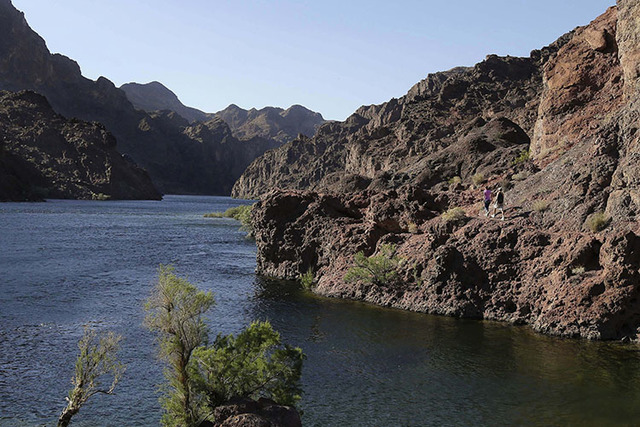Study: Next president may have to act to keep Colorado River water flowing

The next U.S. president will have to act quickly to chart a course so the Colorado River can continue supplying water to millions of city-dwellers, farmers, Indian tribes and recreational users in the Southwest, according to a university research study made public Monday.
A survey of policy- and decision-makers by the University of Colorado concluded that the president who takes office in 2017 could face the prospect of Colorado River water supply cuts to Arizona and Nevada in January 2018.
“This is a nonpartisan issue. There’s a confluence of urgent issues that need to be dealt with,” said Anne Castle, former assistant U.S. Department of the Interior secretary for water and science.
The new presidential administration “will have an opportunity, no matter who it is, to help bring balance to this system,” said Castle, now a senior fellow at the Getches-Wilkinson Center for Natural Resources, Energy and the Environment, which conducted the study.
The Colorado River Future Project focusing on critical issues for the river surveyed some 65 water managers, municipal and agricultural customers, conservationists plus government officials at the tribal, state, federal and congressional levels.
The results acknowledge that more river water than is available is promised to interests in Arizona, California, Colorado, Nevada, New Mexico, Utah and Wyoming — and Mexico.
It points to a continuing 16-year drought diminishing the runoff into the river system and says the most urgent need is to firm up contingency plans and extend water-use agreements.
The agreements include a key share-the-shortage pact signed in 2012 between the U.S. and Mexico. It expires in December 2017 and lets Mexico “store” water at Lake Mead — helping prop up the surface level of the crucial Colorado River reservoir behind Hoover Dam.
The lake, currently at 37 percent capacity, is the measuring point for federal Bureau of Reclamation water supply decisions made every August.
So far, the level has barely remained above the point that would trigger a shortage declaration and cuts of 11.4 percent to Arizona’s usual water allotment, and 4.3 percent of Nevada’s supply.
Combined, that amount of water would serve more than 625,000 homes. Officials have previously warned of possible cuts in January 2018.
The policy paper points to the complexity of negotiations among hundreds of water-rights holders dating to 1922, all overseen but not controlled by the federal government.













